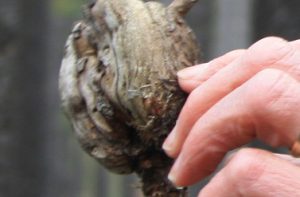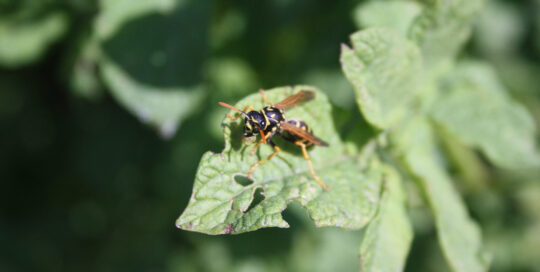Preventing Gall Damage on Trees and Other Plants
Views: 6078

Anyone who has spent time in the woods has noticed abnormal swellings on parts of a tree: gall damage. The same situation happens to many of our domestic species of trees and shrubs, and sometimes even perennials. Although it never appeared to really be a detriment to the plant, I often wondered why it occurred at all.
Yesterday we went on a field trip with H. Wayne Phillips, a botanist and author of Central Rocky Mountain Wildflowers: Including Yellowstone and Grant Teton National Parks, as well as several other books that are a must-have in any wildflower and history lovers’ bookshelf.
He kept 10 kids and four adults enthralled for hours during a short hike in the Highwood Mountains. It seemed every five minutes one of the kids asked about a particular tree or plant. When we were in the lodgepole forest, he picked up and pointed out a fallen branch with a gall on it.
Galls on Trees and Plants
I’ve always wondered how galls are formed and how gall damage happened. Thankfully one of the kids asked what it was. Wayne, who is a retired forest ecologist and ranger, among his many other talents, said galls are often caused by insects. They force the tree to form additional tissue. The tissue is excessive in that particular region of the tree where the insects attack. It typically does not harm the overall structure.
Galls on many plants are formed by gall-making insects or mites. The plant reacts to saliva in the insect bite, or the introduction of an egg or larvae within the tissue of the leaves or stems. It also might be a fungus or bacterium issue. Hormones are released within the plant’s system, causing the plant to grow tissue around the foreign body.
While we frequently find gall damage on the pines and other trees, they can form on any plant, and on practically any part of the plant. It all depends what’s causing the gall formation. For example, there are thousands of species of wasps that use plants as part of their lifecycle. It’s the same with flies, mites, and even fungi.
Roses and other plants sometimes suffer from a condition called crown gall, which is caused by a bacterium that invades the plant. For roses they’ll often be near the graft bud union. The problem is it doesn’t go away very easily, and can ultimately kill the plant.
Truly, after looking into it more, I’m surprised we don’t find more galls on plants.
How to Prevent Gall Damage on Trees and Plants
For the most part, galls don’t hurt the plant, they just look unattractive. But there are instances where they are indicative of a more serious pathogen problem, and need to be addressed.
Prune out the area and treat it with Agrobacterium radiobacter. As crazy as it sounds, this is actually a bacterium that produces an antibiotic. It can prevent the crown gall from infecting wounds. And to rid the crown gall bacterium from the soil, one of the best options is solarizing the area by pulling clear plastic over the bed for a couple of hours. It’ll help a lot to prevent a reinfection.
There is a lot more to galls than what I mentioned in this post, but at least now we know what those funky balls and bumps on trees and other plants are when we find them. For the most part, they’re not a problem, and are more of a fun and unusual find. But it’s also good to know that when they are a fungus or bacterium, there is something you can do about it.
Meet Amy Grisak
Amy is a freelance author and photographer in Great Falls, MT who specializes in gardening, foods, and sustainable agriculture. She provides information on every kind…
Amy's Recent Posts

Looking into the Crystal Ball for a Pest Report








